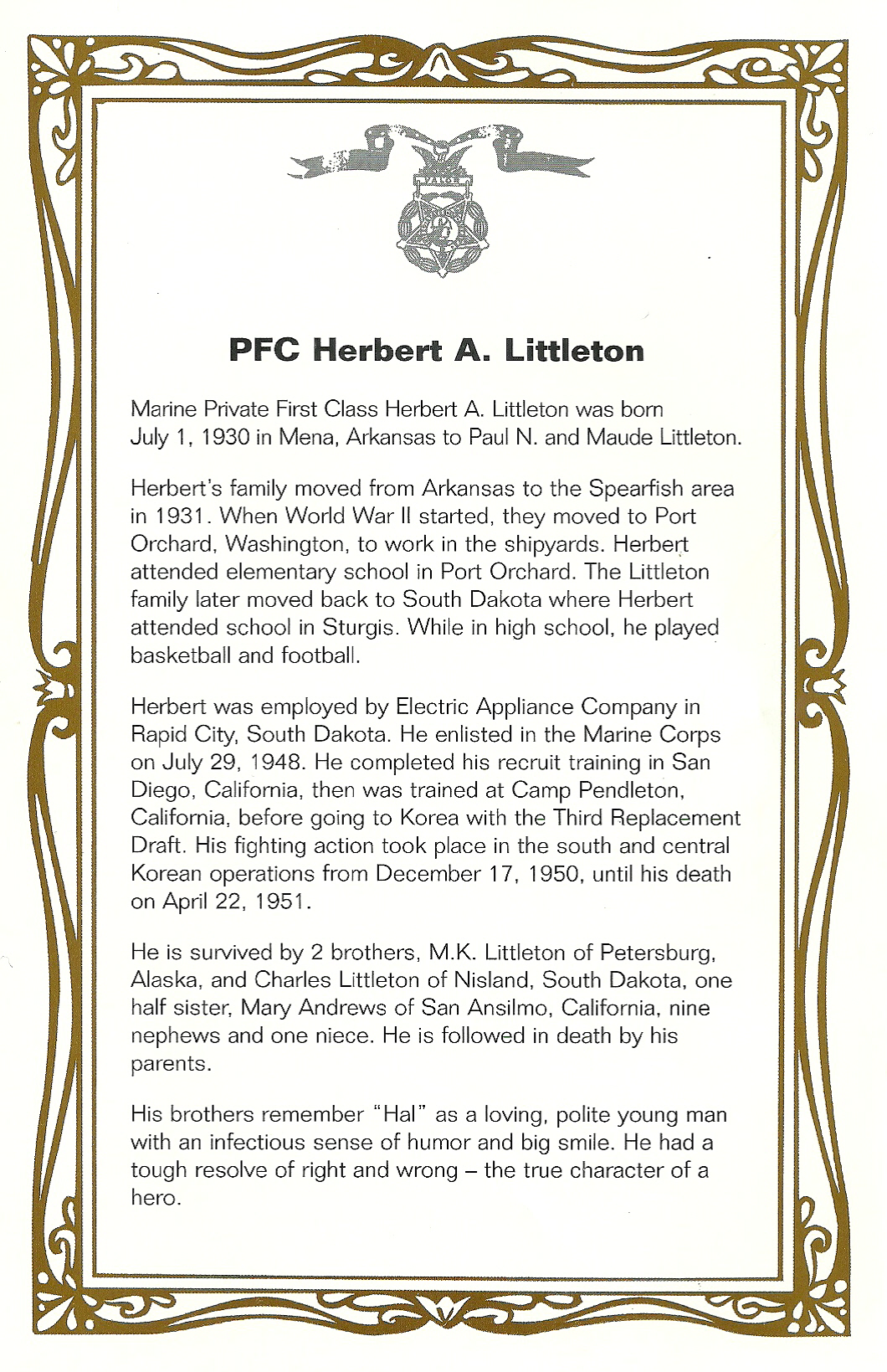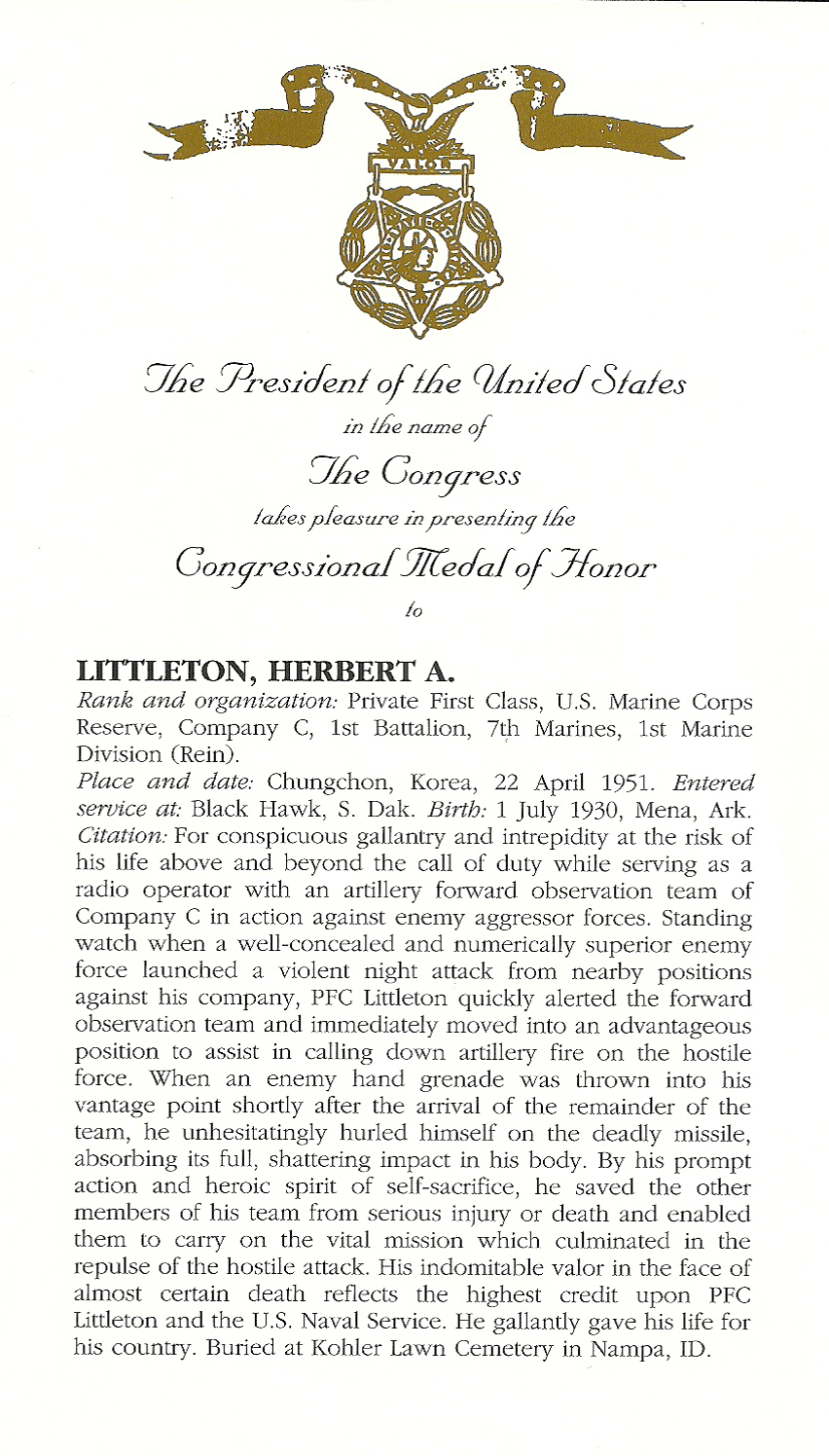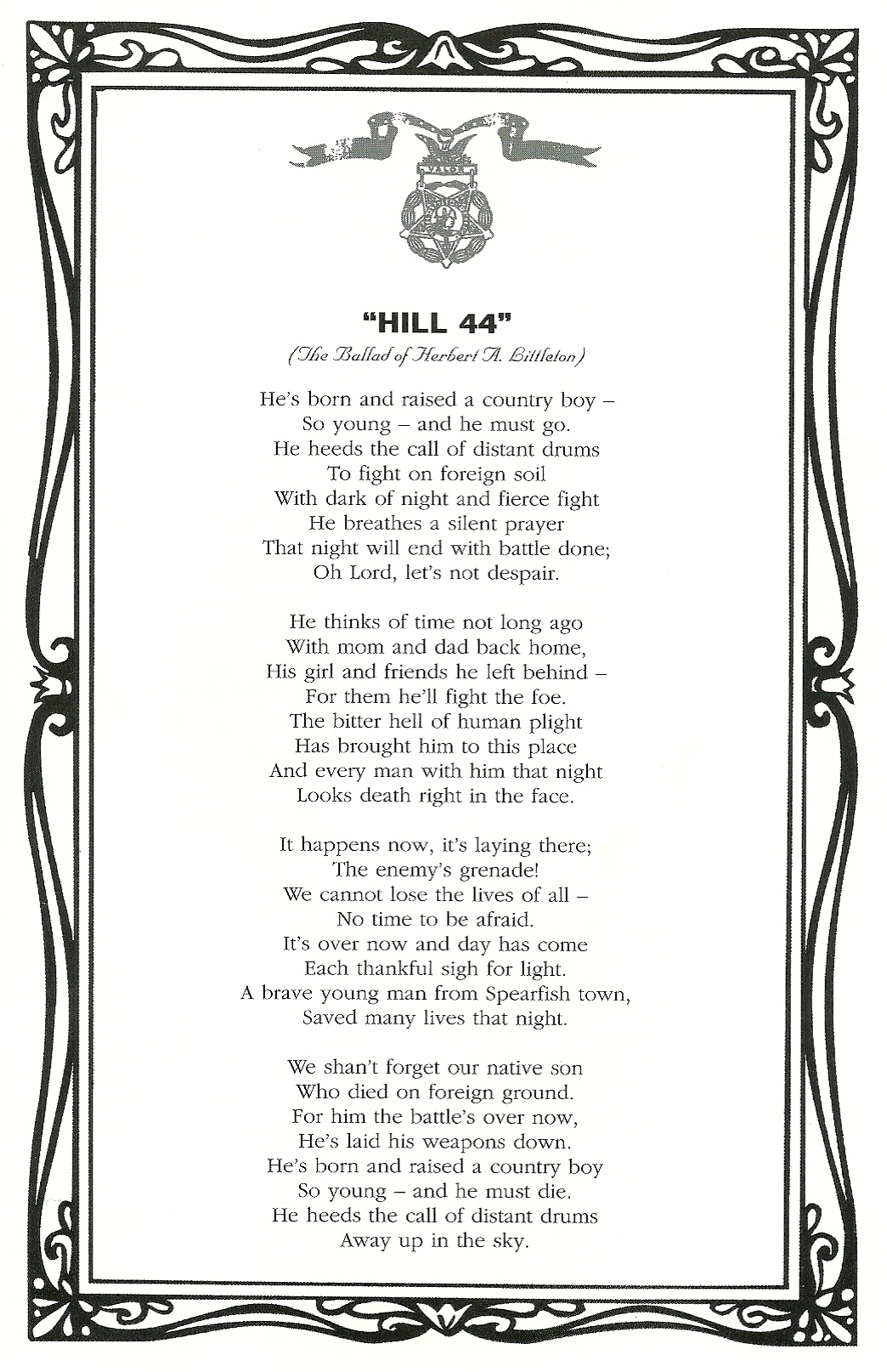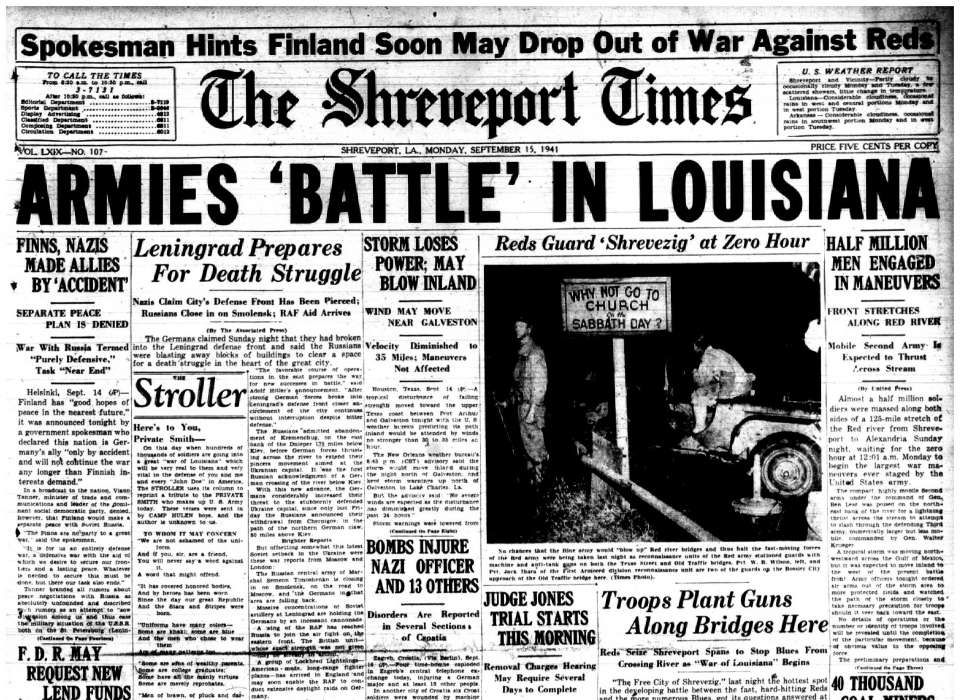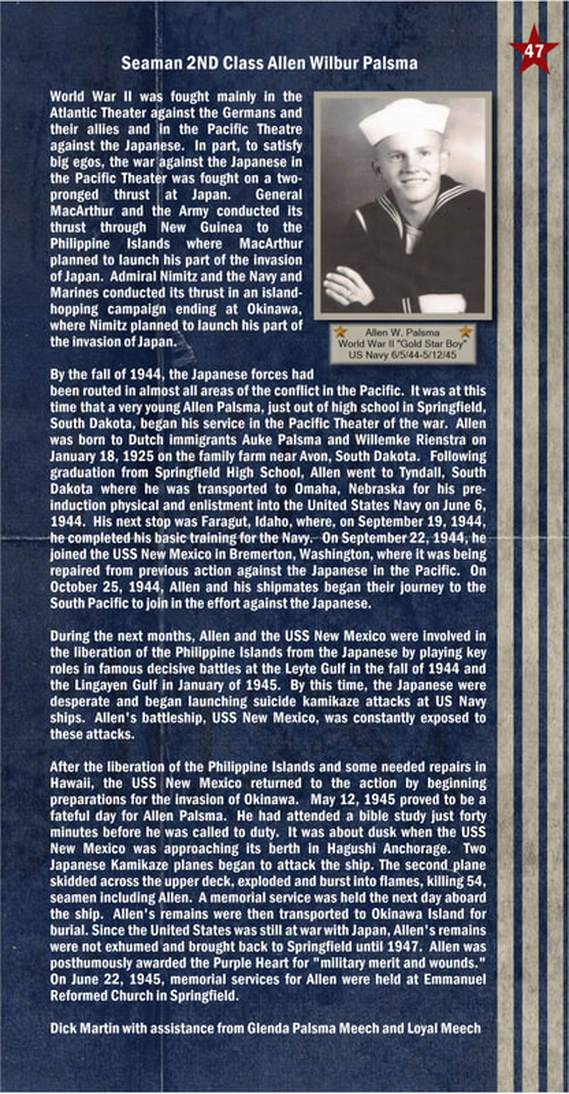|
The highest military medal awarded for bravery is the Medal of Honor. See other parts of this web site for a discussion of that medal and other medals for bravery awarded to Springfield veterans. I believe Springfield has one or two veterans with the second highest award for bravery and two or three with the third highest award. There have been nine South Dakotans awarded the Medal of Honor. They are Captain Willibald C. Bianchi, General Patrick H. Brady, Specialist Four Michael J. Fitzmaurice, Captain Joe J. Foss, Master Sergeant Woodrow W. Keeble, Private First Class Herbert A. Littleton, Captain Arlo L. Olson, Brigadier General Charles D. Roberts, Colonel Leo K. Thorsness. Thanks to Jim Hornstra we have write-ups on all nine and we will periodically publish one in our Sunday Feature section of this web site. Dick Martin Submitted by Jim Hornstra from the South Dakota archives 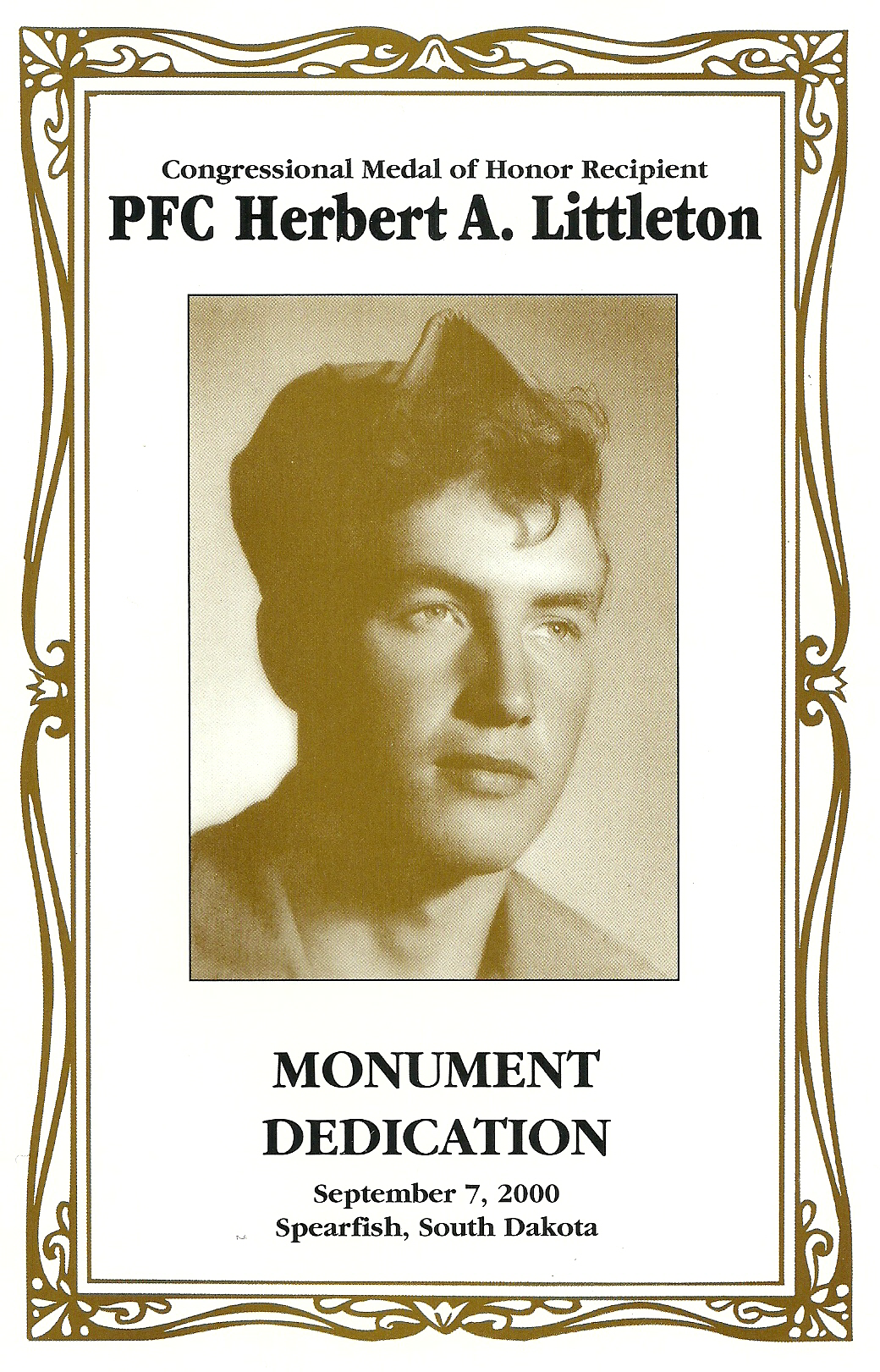
0 Comments
By Dick Martin Have you ever heard of the “Louisiana Maneuvers” as they pertain to WWII? I had not until a few years ago when I began researching and writing the biographies for our Springfield WWII Veterans and mention of the maneuvers kept popping up. The more they popped up the more curious I became. I finally had to find out what they were.
In September of 1941, just a few months before Japan’s attack on Pearl Harbor and the beginning of the WWII for the US, the United States was still playing war games. Throughout that month the US Army staged the Louisiana Maneuvers, the most extensive field exercises in its history. Thousands of GIs, some from Springfield, were fighting sham battles across central Louisiana prairies, cotton fields, and pine-covered hills. The outbreak of the war in Europe forced preparedness in the United States and in 1940 the US Army picked central Louisiana as a training ground. The warm climate allowed for year-round training, and the remote woodlands offered plenty of space. Four camps were created to facilitate the operations. Fort Polk survives to this day. The maneuver was vast, extending from East Texas across Louisiana to its eastern border. Nearly half a million troops participated in the maneuvers with emphasis placed on armor operations; but infantry, air forces, paratroopers, and even cavalry troopers on horseback taking part as well. . The training was plagued numerous times by tropical storms. The maneuvers made and broke many senior officers for later leadership positions in the upcoming war. Never-the-less, the operations took place in two phases consisting of a who’s who of future major players in WWII, ie Colonel Dwight D Eisenhower, Major George S Patton, Lesley McNair, and George C Marshall, just to name a few. Obviously, blanks were used in place of live rounds and bridges were simulated blown and put out of action. A joke went around that troops crossing a bridge that had been blown in simulation were accosted by a grader who screamed at them “Can’t you see the bridge has been destroyed” and they replied “Can’t you see we are swimming.” Despite all of the men and equipment used in the exercises, only one pilot died in a midair collision and two troopers drowned in the rain-swollen rivers. By the time the maneuvers ended on September 28, the soldiers had gained some valuable insight into the rigors of a war campaign and the tactical and strategic problems that would confront them. Taken from an article in the October 2018 WWII magazine “Homegrown War Games” written by Mark D Van Ells Submitted by Jim Uken 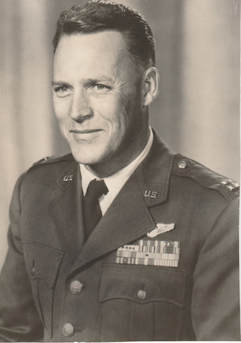 Not too many people are called upon to fight in three different wars, but Helmuth Uken did just that as a Bombardier/Navigator in WW II, Korea, and Vietnam. Known locally to family, friends, and Springfieldites as "Hemmy", throughout his military career he was known as Ken. Turning 18 in March of 1943, Hemmy signed a delayed enlistment with the Army Air Corps and after graduating Springfield HS was shipped to Texas for basic training. As with all trainees he was given a battery of tests which revealed a strong aptitude for math. This resulted in his being selected for flight training as a Bombardier. After completing flight training and getting checked out in the B-25, he was sent to the Pacific where he and his squadron mates were involved in a practice known in the Air Corps as "island hopping." Essentially, as the Allies made advances in the Pacific, the islands and runways taken from the Japanese were soon occupied by US forces who continued their advance toward mainland Japan. By late 1944 they found themselves on Tinian Island; did an in place conversion to the newer, higher altitude and longer range B-29 "Strato Fortress"; and became a part of the famous 505th Bomb Group. Tinian Island was significant for two reasons; with the B-29 it was the first time land based bombers were able to strike Japan itself and it's from Tinian Island that Col Tibbets and the B-29 "Enola Gay" were able to deliver the first atomic bomb on Hiroshima. On a particularly harrowing mission over Japan, and despite being under constant attack by Japanese fighters and sustaining battle damage, Lt Uken's crew successfully struck a high value target for which they were awarded the Distinguished Flying Cross. While he flew many missions overall in the Pacific theater of operations, Ken totaled 27 missions over Japan. Between Jan and Aug 1945, his unit lost 28 B-29 aircraft and 187 aircrew. Like so many returning from WWII, when released from the Army Air Corps in July 1946, Ken used the Boot Strap Program to attend college and returned to Springfield to enroll at Southern State Teachers College. After graduating from Southern, he taught in Geddes, SD, but was recalled to the active duty by the Air Force in 1952. After getting re-qualified in the B-29 it was off to Korea for combat missions there throughout most of 1953. As hostilities subsided in Korea, he was given the option of remaining on active duty or returning to civilian life. By now Captain Uken, he chose the former. The following years brought assignments to Mather AFB, CA, where he was a Navigator Instructor; Tinker AFB, OK, where he checked out in the newest jet bomber, the B-47; the new US Air Force Academy where he was in the initial instructor cadre and taught math and navigation, and Rhein-Main AB, Frankfurt, GE, from where he flew high altitude reconnaissance missions in the RB-57 at the height of Cold War tensions (1960-3). Requesting an assignment close to Springfield, he thought the Air Force would send him next to Offutt AFB in Omaha, but "surprise" he was assigned to South Dakota State Univ. in Brookings as Assistant Professor of Aerospace Studies (AFROTC). But, the Air Force had one more war they needed him to fight. With Vietnam ratcheting up in the mid 1960s and the Air Force fielding the F-4, their newest fighter; based on his previous reconnaissance experience, Major Uken was in the first cadre of Navigators selected to fly in the back seat of the reconnaissance version of the F-4, the RF-4C. Completing training at Bergstrom AFB, TX, Ken was again on his way to a combat zone, this time flying from Udorn AFB, Thailand. His 100th combat mission over Vietnam completed by May 1968, he returned stateside to George AFB, CA, where he was an F-4 Instructor until his untimely death in Sep 1969. Hemmy was interred at the Springfield cemetery with full military honors to include a grave side Honor Guard and the missing man formation flown by F-100s from the SD Air National Guard. As a veteran of three conflicts, Ken received numerous personnel decorations, unit citations, and campaign ribbons. Chief among these were the Distinguished Flying Cross, the Air Medal with 17 Oak Leaf Clusters (OLC), the Meritorious Service Medal, Aerial Campaign Medal w/ 4 OLC, and the Air Force Outstanding Unit Award. Hemmy is survived by his four children Jim, Karen, Wanda and Eric, sister-in-law Mardell Uken, sister Betty Nadinicek, and brother Dr. Dennis (Donna) Uken. Jim Uken |
Categories
All
Archives
October 2023
|
